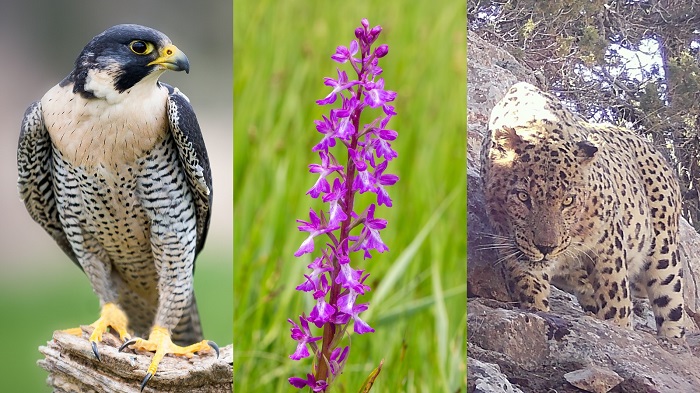Geneva, 20 November 2024 – The Secretariat of the Convention on International Trade in Endangered Species of Wild Fauna and Flora (CITES) welcomes Turkmenistan as the 185th Party to the Convention. With Turkmenistan’s accession, wildlife trade in CITES-listed species in Central Asia is regulated by CITES provisions, marking a unified approach to conserving biodiversity across the region known for its unique ecological landscapes and species. CITES will formally take effect for the country on 2 January 2025.
Encompassing vast deserts, soaring mountain ranges, and the great steppes, Turkmenistan’s geography hosts a wealth of flora and fauna listed in the CITES Appendices: 94 fauna and 15 flora species. Among the region’s iconic wildlife are species such as the Asian houbara bustard (Chlamydotis macqueenii), Imperial eagle (Aquila heliaca) and the elusive Persian leopard (Panthera pardus saxicolor), which are listed in Appendix I for their vulnerability to international trade pressures.
His Excellency, Mr Babanyyazov Charygeldi, Minister of Environmental Protection of Turkmenistan said: “Today, Turkmenistan has joined almost all international Conventions aimed at conservation and enhancing the planet’s wildlife. Despite the fact that the country has only now ratified CITES, it has strictly observed the main provisions of this international treaty all this time. Turkmenistan is ready for active cooperation within the framework of CITES at both the regional and international levels, including on the Peregrine falcon (Falco peregrinus), which is found in Turkmenistan.”
Listed in CITES Appendix II, the Peregrine falcon is among the CITES-listed species expected to be discussed at the 20th meeting of the Conference of the Parties to CITES (CITES CoP20) to be hosted by Uzbekistan in Samarkand, in 2025. Coinciding with the 50th anniversary of the Convention’s entry into force in 1975, the upcoming meeting will provide an opportunity for Turkmenistan and other CITES Parties to propose and decide on strategies for ensuring the international trade in CITES-listed species is well-regulated and not detrimental to their survival in the wild.
CITES Secretary-General Ms Ivonne Higuero said: “Welcoming Turkmenistan into the CITES family is a long-awaited milestone. With 185 Parties, the Convention is nearing universal application, amplifying its impact worldwide. Turkmenistan’s accession, along with the upcoming CITES CoP20 in Samarkand, underscores the Central Asia region’s commitment to CITES implementation. We look forward to working together to ensure that wildlife trade remains legal, sustainable, and traceable, supported by strong enforcement on the ground.”
About CITES
The Convention on International Trade in Endangered Species of Wild Fauna and Flora (CITES) was signed on 3 March 1973 and entered into force on 1 July 1975. With 184 Parties (183 countries + the European Union), it remains one of the world’s most powerful tools for wildlife conservation through the regulation of international trade in over 40,900 species of wild animals and plants. CITES-listed species are used by people around the world in their daily lives for food, health care, furniture, housing, tourist souvenirs, cosmetics or fashion. CITES seeks to ensure that international trade in such species is sustainable, legal and traceable and contributes to both the livelihoods of the communities that live closest to them and to national economies for a healthy planet and the prosperity of the people in support of UN Sustainable Development Goals. ///CITES, 20 November 2024
